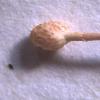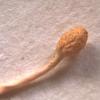
16-11-2025 21:09
 Robin Isaksson
Robin Isaksson
Anyone recognize this acc. to pictures.? Found on

14-11-2025 16:26
 Marian Jagers
Marian Jagers
Hello everyone, On dead wood of Cytisus scoparius

15-11-2025 23:22
Mario FilippaHello,this is what I think to be Hymenoscyphus mac

15-11-2025 20:25
 Riet van Oosten
Riet van Oosten
Hello, Found by Laurens van der Linde, Nov. 2025

14-11-2025 18:31
 Lothar Krieglsteiner
Lothar Krieglsteiner
Hello,can somebody provide me with a file of:Rothe

12-11-2025 09:25
 Viktorie Halasu
Viktorie Halasu
Hello, I need help with a pale terrestric Pseudom

11-11-2025 20:16
Bohan JiaHi, lastly I have found these tiny yellow decayin

09-11-2025 13:20
Hello.A tiny ascomycete, appearing as erupting gra
Cordyceps sphecocephalaon the other had should be 3-6 x 1.5-3 mm but on wasp.
This specimen was 4 x 3 mm
What should I look for to distinguish the species?
Thanks
Mal
here a key to this genus.
rgeards

the following file is updated:
http://www.ascofrance.fr/uploads/document/Catalogue-des-Cordyceps-CLL-4-0001-version-definitive-0001.doc
Regards,
Christian
Mal

note the passage in the document to which Christian has provided the link:
"Littérature : on trouve cette espèce sous le nom de C. dittmari, C. sphecocephala f. ditmarii (=ditmari), C. sphecophila, ou C. sphecocephala (Les récoltes européennes doivent être rapportées à Ophiocordyceps ditmari)." (my underlining - I think the problem is that some of the other names have been variously interpreted in the past).
cheers
Chris

Hi to all,
Traditionally, the specimens collected on wasps were named C. sphecocephala or O. ditmari and the specimens on flies C. forquignonii. We have studied both specimens, cultures and molecular data indicate that they are the same species.
Cordyceps forquignonii Quelet has never been collected since the publication and nobody really knows what it is. Holotype disappeared and we have only an illustration, which contains numerous incoherences.
Regards,
Christian
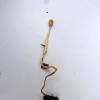
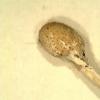
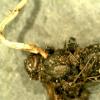
 Catalogue-des-Cordyceps-CLL-2-0001-0001.doc
Catalogue-des-Cordyceps-CLL-2-0001-0001.doc
